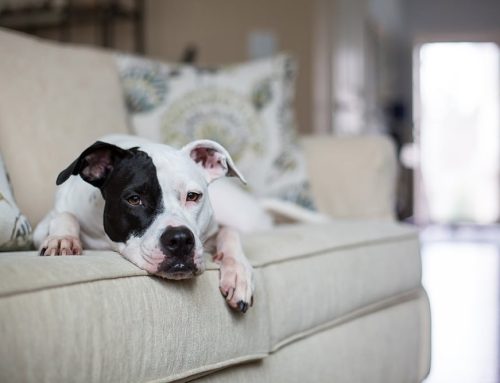How to Prepare for In-Home Euthanasia: Honoring Your Pet and Your Bond
Saying goodbye to a beloved pet is one of the most difficult moments in life. It’s a decision no one wants to face, yet it is also one of the most profound ways to honor a pet’s love and companionship. In-home euthanasia offers the opportunity to say goodbye in a space that is safe, familiar, and filled with love.
More than just a procedure, this moment is about your pet, your relationship, and what feels right for you both. Preparing for the day allows you to create an experience that reflects the love and care you’ve always given them.
Planning the Day: Making Thoughtful Choices
Choosing the Time and Place
There is no “perfect” time, only the time that feels right for you and your pet. Consider:
- Where does your pet feel most comfortable? A favorite bed, a sunlit spot on the porch, or even outside under a tree?
- What time of day is most peaceful? Morning light, a quiet afternoon, or an evening when the house is still?
This day should be as calm and stress-free as possible, both for your pet and for you.
Who Should Be Present?
Some people find comfort in sharing this moment with family, while others prefer it to be private. Consider:
- Do you want close family or friends there? Only those who can provide comfort and calm should be present.
- What about other pets? Some pets benefit from being able to say goodbye, while others may feel stressed.
There is no right or wrong choice—only what feels best for your pet and your own grieving process.
Creating a Peaceful Space
Think about the little comforts that will help bring ease to the moment:
- A soft blanket or bed for them to rest on.
- Their favorite toys nearby for familiarity.
- Gentle music or quiet conversation to create a calm atmosphere.
- Their favorite treats, if they are still able to enjoy them.
This is a moment of love, and these small details can make it feel more personal and meaningful.
Preparing Yourself Emotionally
There is no way to fully prepare for the emotions of this day, but acknowledging them can help.
- Give yourself permission to grieve. It’s okay to cry, to feel relief, to feel guilt, to feel everything all at once.
- Know that this is an act of love. The choice to ease suffering is one of the most selfless things you can do.
- Talk to someone beforehand. Whether it’s a friend, family member, or counselor, having support lined up can help.
No matter how much we prepare, this moment will be hard—but being fully present for your pet, in whatever way feels right to you, is what truly matters.
Preparing Children for the Goodbye
If you have children, their understanding of loss will depend on their age and maturity. Some ways to help them through:
- Be honest, but gentle. Let them know their pet is sick and that this is a way to stop their pain.
- Give them choices. Do they want to be there, or would they prefer to say goodbye beforehand?
- Encourage them to share memories. Let them write a letter, draw a picture, or tell their pet how much they love them.
- Reassure them. Let them know it’s okay to be sad, and that their pet felt love every day of their life.
Deciding Whether to Stay for the Entire Process
Some people want to be present through every moment, while others prefer to step away once their pet is peacefully sedated.
- You can stay until they fall asleep. The first step of euthanasia is sedation, which gently lulls them into deep sleep. If you find it too painful to stay for the final injection, it is okay to leave at this point.
- Trust yourself to make the right decision. Your pet has always known your love, whether you are holding them in that final moment or not.
Whatever you choose, know that the veterinarians handling this will be gentle, compassionate, and respectful.
Aftercare: Planning for What Comes Next
After your pet has passed, you’ll need to decide on aftercare arrangements. Thinking about this in advance can make the day itself a little easier.
Cremation or Burial?
- Private cremation: Your pet’s ashes will be returned to you in an urn or keepsake.
- Communal cremation: No ashes returned, but handled with care and dignity.
- Home burial: If allowed in your area, you can choose a meaningful resting place.
For larger dogs, consider arranging for help to carry them if needed.
Pet Loss Resources and Support – Cornell Vet
The Days After: Finding Support in Grief
The house will feel different. Their absence will be deeply felt—the quiet will seem louder.
Things That May Help
- Plan what you will do after. Have a friend visit, take a walk, or do something gentle for yourself.
- Allow yourself to grieve. There is no timeline for healing.
- Create a memorial. Light a candle, frame a favorite photo, or plant a tree in their honor.
- Talk about them. Share stories, laugh about their quirks, keep their memory alive.
- Find support. A pet loss support group, a counselor, or just a trusted friend can help.
Pet Loss and Bereavement Support – APLB

Honoring Your Pet’s Love and Life
Saying goodbye is one of the hardest things we do for our pets, but it is also one of the most loving gifts we can give them.
They have spent their lives giving you their trust, their companionship, their unconditional love. Now, in their final moments, you have the chance to give them peace, comfort, and a farewell filled with love.
If you need guidance, support, or help making these decisions, we are here for you.
Schedule a Consultation with Love & Dignity
You are not alone in this—your pet was loved, and that love will remain.












Leave A Comment